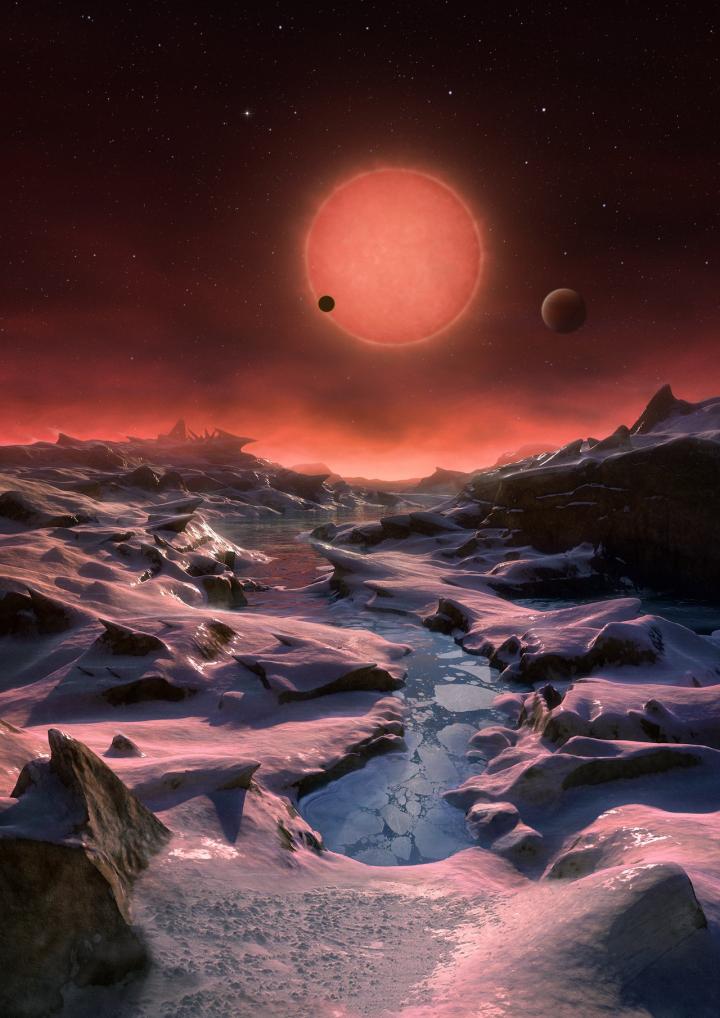

Ultracool stars are some of the hottest things in astronomy today.
In a paper published today in Nature researchers announced that they had discovered not one, not two, but three temperate Earth-sized planets orbiting a star so cool and dim it can’t even be seen from Earth with the naked eye. The findings give astronomers hope that they could soon detect habitable areas on the planets which orbit their Jupiter-sized sun very closely.
Exoplanets are detected when a planet transits between it’s sun and our telescopes here on Earth. The small shadow or dip in brightness is the tell-tale sign that something large is orbiting a planet. The simple version is, by counting the number and intensity of the dips, astronomers can determine how large a planet is, and how close to its star it is orbiting. But figuring out a planet’s atmosphere is trickier, simply because a planet’s atmosphere is usually not that large, and stars are very, very bright.
“Why are we trying to detect Earth-like planets around the smallest and coolest stars in the solar neighborhood? The reason is simple: systems around these tiny stars are the only places where we can detect life on an Earth-sized exoplanet with our current technology. So if we want to find life elsewhere in the Universe, this is where we should start to look.” Michaël Gillon, lead author of the paper said in a statement.
In the future, as telescopes and analytic methods get more advanced, astronomers might be able to take another look at warmer stars more similar to our Sun or even larger stars. But for now, researchers rely on space telescopes to determine the atmosphere of a planet as it passes between its star and Earth. If the star is too bright, or the planet too small, our instruments might not be able to pick up the chemical composition of the planet’s atmosphere. That’s why researchers are looking at dimmer red dwarfs and dwarf stars to try and detect the atmosphere on potentially habitable planets.
Two of the three recently detected planets are so close to their sun that they might get too much radiation to be habitable, but the researchers think there might be a chance that a few areas on the planets might have the potential to support life.
This team isn’t the only one that’s working on the problem. Last year another team announced that it would try to analyze the atmosphere of a small rocky planet orbiting a star 39 lightyears away from Earth. It’s too hot to be habitable, but the information could help analysts take a look at planets with more life-supporting potential. And everyone is waiting for the next big thing(s) to come along in exoplanet research.
“Thanks to several giant telescopes currently under construction, including ESO’s E-ELT and the NASA/ESA/CSA James Webb Space Telescope due to launch for 2018, we will soon be able to study the atmospheric composition of these planets and to explore them first for water, then for traces of biological activity. That’s a giant step in the search for life in the Universe,” Julien de Wit, a co-author from the MIT said.
Until then, stay cool.
